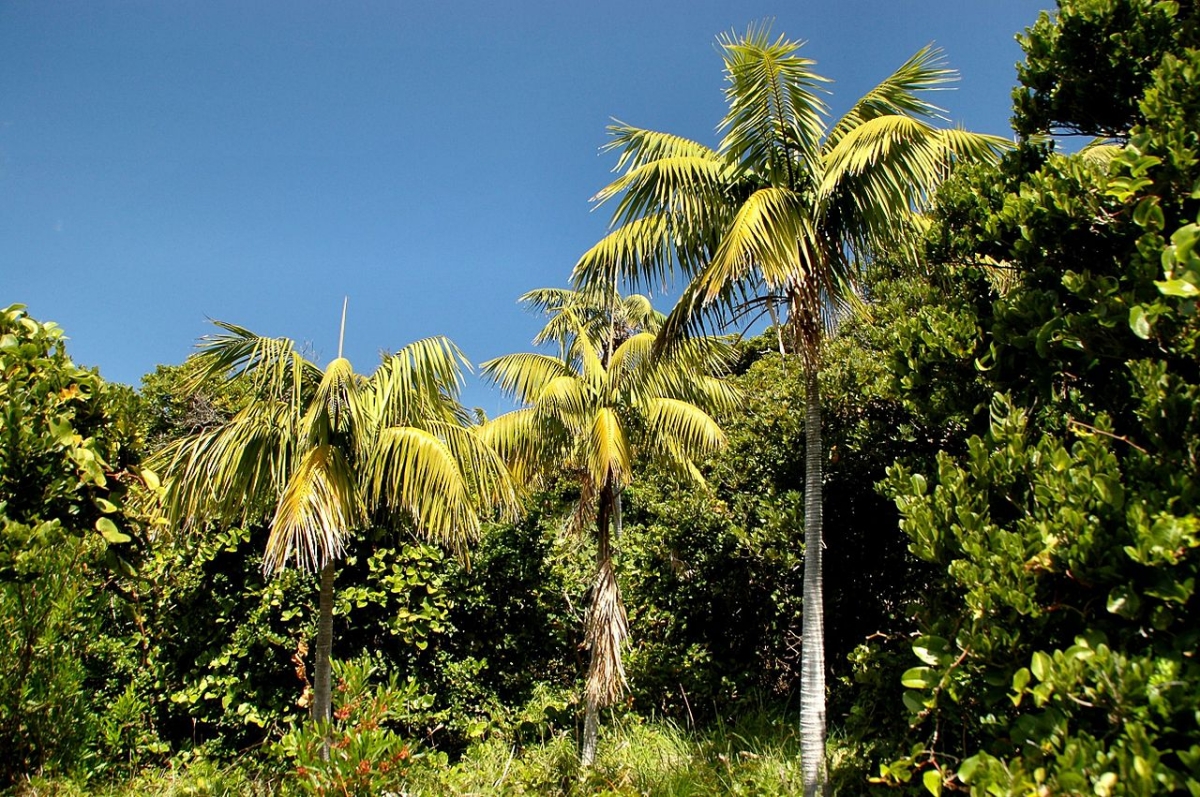
Image – Wikimedia/Dinkum // Daintree Rainforest (Australia)
How is the flora of Australia? Where do you live? Both on the Australian continent and on the surrounding islands, we find many types of micro-climates that allow the growth of a certain group of plants. Thus, we can see both humid tropical forests and very dry regions in which only very resistant species can survive.
Therefore, there is such a diversity of plant species that I am convinced that you have had one at home or in the garden, or that you even have right now. You do not believe me? Well take a look at what I'm going to tell you.
What is the Australian flora?
The flora of Australia, or Australian flora, are the plants that live both on that continent, and on the islands around it. It is estimated that there are more or less 20 species of vascular plants and 14 non-vascular ones, and that is without mentioning fungi and lichens.
It is, therefore, a country in which there are various types of vegetation, grouped into various types of natural landscapes: jungles, savannahs, steppes and deserts, open and eucalyptus forests, and maquis.
What are the characteristics of these different types of landscapes?
Just by the name we can already get an idea of what they are like, but let's see what types of plants we find in each of them:
open forest

Image – Wikimedia/JessIvy
It is a type of forest that has a temperate climate. Depending on the area, it can take more or less, but if there is a plant that we find it is always eucalyptus, like the eucalyptus regnans. Other plants are ferns, acacias, Tasmanian cedar (Athrotaxis cupressoides) or boxwood brush (Lophostemon confertus).
eucalyptus forest

Image – Wikimedia/Poyt448 Peter Woodard
When we talk about the eucalyptus forest in Australia, it is inevitable to mention the Blue Mountains, declared a World Heritage Site by UNESCO in 2000.
Here, live about 90 different types of eucalyptus, which share a habitat with plants considered living fossils, such as the Wollemia or the Acrophyllum.
deserts and steppes

Australia is, in general, a very dry continent. Arid and semi-arid regions occupy much of the western and southern parts. The largest is the Great Victoria Desert, which occupies an area of 650 thousand square kilometers.
For any plant to grow, there has to be water, and in deserts that hardly ever happens. But in the steppes yes, since about 500 mm of precipitation can fall per year. Thus, It is here that low-growing shrubs and herbs that are very resistant to drought will grow.
Maquia

The maquis is an ecosystem in which a Mediterranean climate predominates, with very hot and dry summers and fairly mild winters. The plants that live here are mainly low-growing, evergreen trees and shrubs.
australian savannah

Image - Wikimedia / Ethel Aardvark
The savannah is a biome in which two types of seasons are distinguished: one very dry, and another in which it rains a little more. Consequently, very few plants can survive here, except for some acacias, eucalyptus, and low shrubs and grasses.
Jungles

Image - Wikimedia / Rexness
They are tropical rain forests, watered by the monsoon rains of the summer. Here About 12000 mm of precipitation can fall each year., which added to the fact that the temperatures are very mild (warm) allow a great diversity of plants to grow.
Palm trees like the kentia or the Archontophoenix, ferns, trees like the giant Agathis microstachya that can reach 50 meters in height, and of course conifers such as the Araucaria bidwillii.
Types of Australian Plants
And finally, let's see some plants that are typical of Australia:
Kentia (Howea forsteriana)

Image - Wikimedia / Black Diamond Images
La kentia palm tree It is endemic to Lord Howe Island, which belongs to New South Wales (Australia). It reaches a maximum height of 15 meters, and develops a trunk about 15 centimeters thick.. The leaves are pinnate, about 3 meters long and dark green.
It is widely grown as an indoor plant, as it adapts very well to living inside buildings and homes. However, it is interesting to add that it withstands the cold, and even slight frosts, and can be grown outdoors in areas with a mild Mediterranean climate.
giant rubber tree (eucalyptus regnans)

Image - Wikimedia / Pimlico27
The giant gum It is considered one of the tallest trees in the world, being able to measure up to 110 meters in height.. Its trunk grows straight and branches several meters above the ground. Its growth rate is very fast as long as it has moisture and the weather is temperate or warm.
It is an endemic species both on the Australian continent, where I live in the southeast, and in neighboring Tasmania.
Grevillea flexuosa

Image – Flickr/Jean and Fred Hort
La Grevillea flexuosa It is an evergreen shrub endemic to Western Australia. Grows up to 2 meters tall, and produces white inflorescences which sprout at the end of some branches.
hakea laurina

Image - Wikimedia / JJ Harrison
Known as bush emu or pincushion hakea, is a shrub native especially to southwestern Australia, but it is also found in the southeast, and isolated further north on the continent and in Tasmania.
Reaches a height of between 3 and 6 meters, and develops lanceolate green leaves, and flowers grouped in pink inflorescences that certainly look like a pincushion or even a sea urchin.
pteris tremula

Image - Wikimedia / CT Johansson
El pteris tremula it is one of the ferns that grow in Australia, as well as in Tasmania and some other neighboring islands, such as Lord Howe or Norfolk. The leaves are green and very long, up to 2 meters in length.
In Australia and its neighboring islands there is a great diversity of plants. I hope you liked the article.